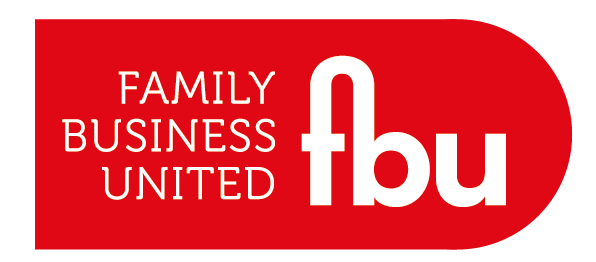Get in touch: nick.mayhew@alembicstrategy.com
So, you’re the leader of a business and you want to get your people fired up so you stand the best possible chance of getting a product launched, moving into a new market, or hitting the numbers straight out of the park. But as a chief executive (CEO), how do you lift a team so that they share just a tiny slice of your own passion? You know from experience that it’s far easier said than done, right?
It’s natural for you as a leader to become frustrated when you’re cranking the handle at full tilt, but it seems like those around you are only just showing up for work, and some barely capable of getting through the average day. Sometimes, it’s painfully clear that motivation and purpose are out of alignment. It probably feels like you're clear on strategy, and they aren't.
This article explores the concept of motivation from a psychological perspective, and how engagement and fulfilment can empower people either individually or as a team to become more purposeful. If you’re the boss of a business, a human resources (HR) manager, or just a people-person with an interest in powering up your staff, this is for you.
People working well together
Imagine the motivation levels of your software development team being as super-charged as your own. Or your sales function being completely in sync with the production staff, both teams firing on all cylinders. Not only are they a joy to be around, but their output becomes gloriously enriched as they purposefully seek a common goal.

But what does ‘working well’ mean, exactly? When your job is to manage a team of people, you want those people to be as committed to it as you are so that you can get the work done efficiently, quickly and without starting a war along the way. In fact, I’m prepared to suggest that organisational utopia is a state where the staff are as enthusiastic as the chief executive or business owner.
Super-charging people in their teams
In order to understand how to motivate our staff, we should consider the end state – an ideal outcome of our effort to generate purpose. From there, we can evaluate the varying needs of the people within those teams so that we can get to what makes them tick.
First, let’s try to understand what a super-charged team might look like:
- Committed to a common business objective
- Understanding of their individual roles in achieving the objective
- Synchronised communication and functionality
- Motivated and enthusiastic in pursuing their tasks
These characteristics summarise the intent of the leadership – also known as the corporate vision – as well as the requirements of that leadership from its people: how the team will be orchestrated and execute the business plan to achieve the objective.
Now let’s look at what a super-charged team does so well. A more purposeful and motivated team brings an abundance of beneficial outcomes:
- Creates higher levels of output
- Produces better and more valuable work
- Increased attention to detail
- Happier teams and more frequent collaboration
- Closer and improved team functionality
- Lower staff turnover and absenteeism
- Greater return on investment (ROI)
Organisational commitment
The psychological term for how involved in a company one is, and feels, is organisational commitment.
Organisational commitment is defined as the degree of psychological identification with a company, or level of attachment to a company. The components of it are the acceptance of the organisation’s values and goals, a person's willingness to exert effort for the organisation, and a strong desire to remain affiliated with the organisation. There are a variety of other factors that relate to organisational commitment including job enrichment, autonomy, opportunity to use skills, and positive attitudes toward the work group. There is generally speaking a reciprocity of perceived commitment from the organisation, as well as an impact from perceived organisational equity and justice.

There are also a variety of types of organisational commitment. The first is affective or actual organisational commitment. This means that the employee identifies with the organisation, accepts its values, and complies with its demands. This form of organisational commitment essentially concerns the person’s emotional attachment.
The second is continuance or behavioural organisational commitment. This is when an employee is committed to an organisation due to extrinsic factors, such as pensions, pay or seniority. It can also mean an absence of feasible alternatives.
The third and final form of organisational commitment is normative organisational commitment. This simply means that the employee feels a sense of obligation to the employer, nothing more, nothing less. They feel that someone has faith in them and therefore they should stay; they feel like this is a pretty good gig and it’s not worth diving into the abyss of alternatives.
So, how can you achieve and maintain a high level of organisational commitment in your workforce? And how can you ensure that it’s actual commitment, and not just a lack of other options?
A study conducted by Gary Dessler in 1999 identified five key methods with which you can improve organisational commitment in your company. These are:
- Commit to people-first values
- Clarify and communicate your mission
- Guarantee organisational justice
- Create a sense of community
- Support employee development
So, let’s go through these points one by one and identify how you can improve the organisational commitment of your employees.
Commit to people first values
A significant amount of psychological research has indicated that employees who feel that they are important and respected individuals tend to be more committed to the organisation that employs them. The same can be said of the extent to which employees feel that they are making valuable and important contributions to the organisation. And this makes sense. The more valued and respected you feel, the more committed you are likely to be. But how can you put it into practice? There are a variety of ways that Dessler puts forward.
It can be as simple as putting your people first values into writing. If you have something like a staff handbook, it may be wise to include something along the lines of “I have a right to be treated with dignity and respect.” It’s a small step, but it lets your employees know that you value them and their contribution to your organisation.
Another way to put your people first values into practice is to hire people into managerial roles that have internalised your people first values. Evaluate them for a few months after they start in their job in order to ensure that these are values that they hold. This will both ensure that they already hold your values, as well as reinforcing them.
Ultimately, it is important to physically demonstrate that you put people first. This can be done with extensive two-way systems of communication, such as open-door policies and frequent meetings, providing job security to your employees by hiring permanent staff rather than temps, and providing the opportunity for your employees to achieve self-actualisation, being all they can be.
Clarify and communicate your mission
It is absolutely essential for your business to have a mission, and to have a commitment to it. As Dessler writes, it is not just the presence of a goal that stimulates progress, but also the level of commitment to that goal. If your employees feel that they share a common goal with your organisation, they are more likely to become committed to your organisation, and then stay committed to your organisation.
Once you have your mission, it needs to be crystal clear to your employees what it is. Therefore, you must do as much as possible to make your mission clear. Discuss with your team what the mission of your organisation is, and have it supported by a wider philosophy. If you have a clear mission and an ideology backing it up, you will see two benefits. The first is that of the mission, as a focus that your employees can commit to. The second comes from the values and philosophies behind it, which provide internalised guidelines for their behaviour.

Additionally, your employees will be a lot more likely to adopt your mission statement if it is a charismatic one. This will make it a lot easier for your employees to identify with your mission, and they will do their best for the firm not because they are paid to, but because they identify with the organisation and want to do well for it.
It is much easier to maintain a set of values within your organisation if you use values-based hiring practices, ensuring that the values of the candidate are compatible with those of your firm before they’re even an employee. In order to do this, you can include questions about the candidate’s values and how they line up with those of your company in the interview process, perhaps by having prospective employees fill out a questionnaire. This can be combined with emphasising the values of your organisation when new employees start work, to ensure they are integrated into your existing team sharing the values of the organisation.
The motivated team
There are numerous ways to motivate a team, but where to start?
You might begin by engaging in a strategic discovery process to explore the deeper needs of the people themselves. Alternatively, there are tools available for examining the intrinsic and extrinsic motivations, so that you can purposefully motivate them.
You might explore self-determination theory to boost motivation.
Whatever you choose to do, remember that the process of energising both leaders and teams is not an instant one. Time is key, as is engagement to determine the correct route to establishing what motivates a team.
You may have noticed that we haven't covered all 5 points mentioned towards the beginning of this article. That's because this is part 1, and part 2 will be coming soon!
Get in touch: nick.mayhew@alembicstrategy.com




